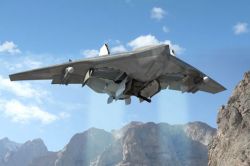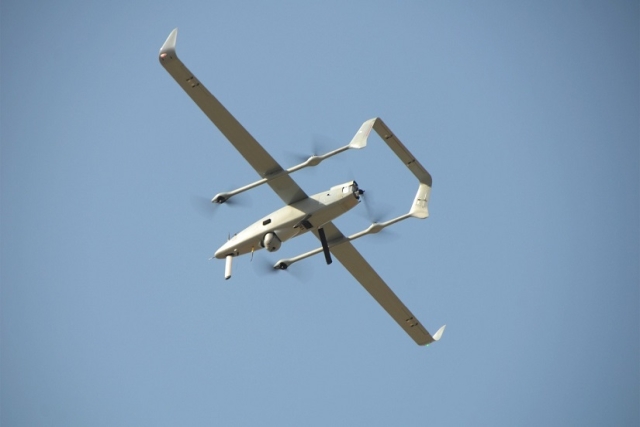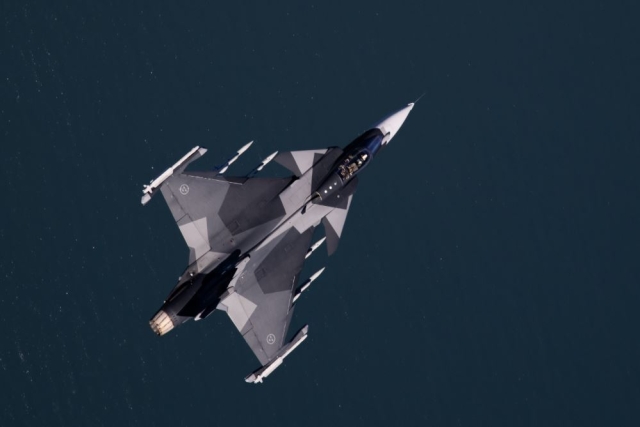New Lockheed Martin VTOL Aircraft To Be Operational In 2015: Reports

Lockheed Martin is developing a new kind of unmanned, vertical take-off and landing (VTOL) aircraft that seeks to replace helicopters on a wide range of military missions, and will go operational by mid-2015.
In early 2013, US Defense Advanced Research Projects Agency (DARPA) agreed on a proposal from Lockheed-Piasecki team, to pursue a flying vehicle that can carry a mix of modular payloads, including small vehicles, cargo containers, sensors or weapons weighing up to 1,360kg (3,000lb), according to Flight Global.
The newly renamed affordable reconfigurable embedded system (ARES) programme is substantially based on an existing design concept for a “modular and morphable air vehicle”.
Piasecki received a patent for an ARES-like air vehicle in 2011. It features an “air module” with a wing, tilting ducted fans, engines, drive system and a load-carrying structure to support the payload.
DARPA reopened the design of the air module by dropping the requirement for it to be driven on a single-lane road, Kevin Renshaw, the programme manager at Lockheed’s Skunk Works unit was quoted as saying. That requirement had limited the diameter of each ducted fan to about 2.44m (8ft), but now the Lockheed team is considering widening the diameter to 3.05m, he says.
The team also is evaluating proposals for the vehicle's two turboshaft engines, which fall within the thrust class of a light twin helicopter, Renshaw said. Lockheed plans to select an engine supplier by the end of the third quarter this year.
Instead of seeking to produce a realistic flying car, ARES is hoping to develop a vehicle that can meet several critical needs.
By offloading the lifting force on to the wing in forward flight, the ARES vehicle should be capable of reaching speeds around 200kt (370km/h) with a full payload. Most wingless helicopters fly 30-100kt slower with payloads stored internally, and up to 130kt slower with an underslung load, he says.
In addition to higher speeds, the ARES vehicle is designed to be more versatile. Helicopters use a spinning rotor to produce lift and thrust, but the diameter of the rotor disc limits the number of safe landing zones – especially in urban and cluttered areas.
A helicopter in the ARES class requires a 30.5m-wide landing zone, but the ARES’ narrower ducted fans need only half the space to manoeuvre, Renshaw says. A study of landing zones in Afghanistan showed the ARES vehicle would have access to 10 times the number of landing zones than a conventional helicopter, he adds.
The trade-off for that added flexibility is a reduction in fuel efficiency in hover mode, however. While the ARES wing makes the vehicle more efficient in forward flight, the helicopter’s rotor is better for lifting a payload vertically. “A helicopter is more efficient at hover,” Renshaw said.
Lockheed believes ARES could follow in the footsteps of two of the agency's past successful projects: the Have Blue programme that yielded the Lockheed F-117 stealth fighter, and the advanced short take-off and vertical landing programme that led to the Lockheed F-35B.
Meanwhile, the ONR is developing software for unmanned vehicles to find landing zones autonomously. The goal is to replace the system used to manually direct the Kaman/Lockheed K-Max unmanned helicopter, which has been resupplying remote bases in Afghanistan autonomously for nearly two years.
The ONR’s autonomous aerial cargo/utility system could be combined with a future design evolved from the ARES programme, Renshaw added.









